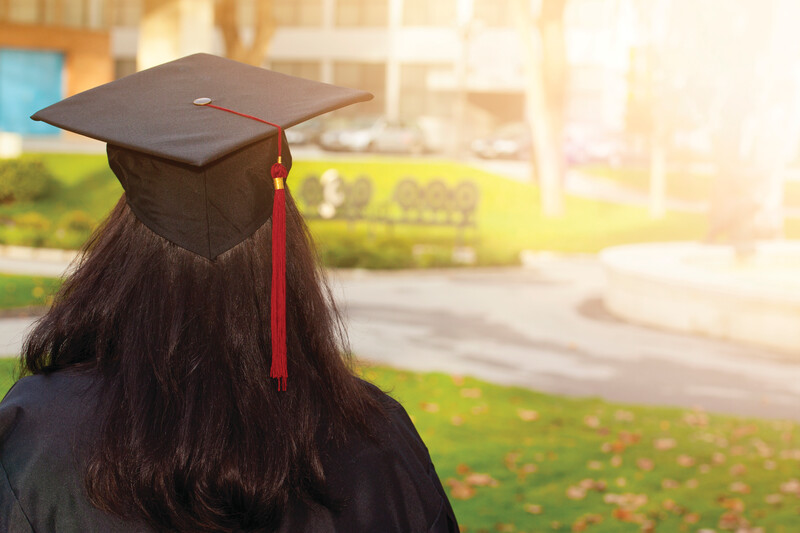Research Alert
Time Off to Transition
According to two studies recently conducted in Australia, taking a gap year between high school and college may help students complete a degree once they return to school. The gap year can involve such activities as travel, service learning, or work.
In one study, which involved 2,502 Australian high school students, the author examined the academic factors that signal whether students are more likely to take time off. In a second study, which involved 338 college students, the author examined the academic profiles of students who participated in a gap year after high school.
- Students were more likely to take a gap year if they had low academic performance and motivation in high school.
- University students who had taken a year off were more motivated and had greater persistence and better planning and task-management skills than students who did not take a year off.
- Taking a year off did not adversely affect students' academic motivation once they enrolled in a university.
- Although there is increasing heterogeneity among gap-year participants, young women and students from English-speaking backgrounds appear more likely to take a year off.
The report, Should Students Have a Gap Year? Motivation and Performance Factors Relevant to Time Out After Completing School (2010), was written by Andrew J. Martin and appeared in the Journal of Educational Psychology, 102(3), 561–576.
Only Online
Podcasts About—and By—Kids in the Middle
Should middle schools give tweens the safe conformity of school uniforms—or let them dress to experiment? What does it mean for a 12-year-old to be a good cybercitizen? How can teachers reach a gifted 6th grader? How can they engage teens through wikis and Skype?
A series of podcasts by the National Middle School Association (www.nmsa.org/Publications/TodaysMiddleLevelEducator/tabid/1409/Default.aspx) takes on questions like these through interviews with innovative middle school teachers and experts on teaching adolescents.
For funny and insightful advice straight from the source, check out the creative student-made podcasts (www.nmsa.org/moya/StudentEngagement/ExpressionsfromtheMiddle/2009/Podcasts/tabid/1817/Default.aspx). For instance, five 7th graders illustrate what a middle school teacher should not do through a skit featuring, on one hand, the rigid Ms. Strict-o and, on the other, the cloyingly sweet Ms. Lilypad. Listen to these podcasts with students as a way to start conversation about what they'd like to see in classrooms—and urge them to create their own podcasts for the National Middle School Association's annual contest (www.nmsa.org/moya/StudentEngagement/CallforSubmissions/tabid/1187/Default.aspx).
Relevant Reads
The Third Chapter: Passion, Risk, and Adventure in the 25 Years After 50, by Sara Lawrence-Lightfoot(Farrar, Straus and Giroux, 2009).
Transitions, of course, are not limited to the school-age years—they happen throughout life. In this book, Lawrence-Lightfoot examines a unique stage of "creative and purposeful learning" that some individuals experience in the years between ages 50 and 75. The author bases the book on conversations she conducted with 40 women and men in this age group who had embarked on "new learning adventures"—from practicing meditation, to learning to draw, to studying quantum physics, to becoming a playwright, to taking surfing lessons. The qualities that enable people during this stage of life to change, adapt, and master new skills and insights are not so different from the qualities that enable children and youth to take on the challenges of transition: a willingness to take risks, to experience and learn from failure, to seek guidance from others, and to develop new supportive relationships.
"For the most part, school learning does not anticipate or help students prepare for lifelong learning. … We work to prepare our young people for the next step up the educational pyramid, or the first level of employment, and we ignore the long view. (pp. 235–236)"
Numbers of Note
37: Percentage of white youth in the United States ages 25–29 who had attained a bachelor's degree by 2009.
19: Percentage of black youth in the United States ages 25–29 who had attained a bachelor's degree by 2009.
12: Percentage of Latino youth in the United States ages 25–29 who had attained a bachelor's degree by 2009.
<ATTRIB> Source: National Center for Education Statistics. (2010). The Condition of Education 2010. Retrieved fromhttp://nces.ed.gov/programs/coe/press/highlights2.asp </ATTRIB>
52.8: The percentage of high school students enrolled in the 50 largest U.S. cities who graduated on time with their class.
9th: The year when the greatest number of students dropped out in more than one-half (31) of these 50 school districts.
<ATTRIB> Source: Swanson, C. B. (2009). Closing the Graduation Gap: Educational and Economic Conditions in America's Largest Cities. Bethesda, MD: Editorial Projects in Education Research Center. Retrieved from www.edweek.org/media/cities_in_crisis_2009.pdf. </ATTRIB>
World Spin
Reading Between the Lines
In Mumbai, India, teachers at the Podar School are being trained to spot signs of student distress—in students' handwriting. According to workshop organizers, handwriting analysis, or graphology, can reveal whether a student is suffering from depression or stress, even predicting such problems as delinquency or addiction. "It's a good tool," said Swati Popat, director of Podar Education Network, "because it gives teachers a better idea of what's going on inside the child's mind."
PageTurner
<BQ> "Early adolescence is like starting a car without having a skilled driver behind the wheel." <ATTRIB> —Laurence Steinberg </ATTRIB> </BQ>




